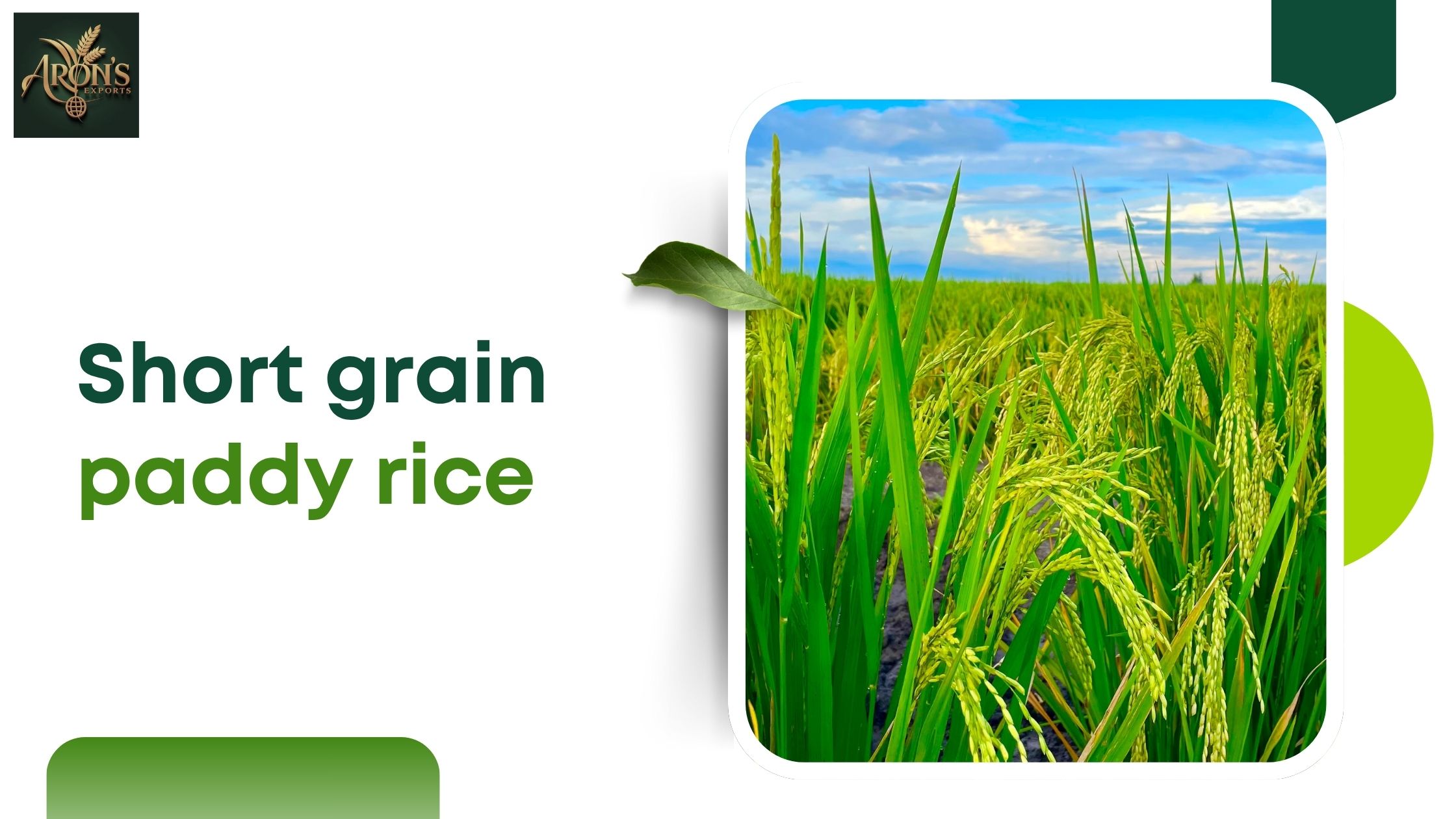Short Grain Paddy Rice has become increasingly popular among farmers and consumers due to its soft texture, natural stickiness, and versatility in global cuisines. For beginners venturing into rice cultivation, this variety offers strong market demand and dependable yields—provided it is grown with proper planning and management. At Aron, we help new growers succeed by offering high-quality inputs, expert advice, and practical solutions tailored for rice farming. This guide outlines everything a beginner needs to know to start cultivating high-quality Short Grain Paddy Rice.
1. Understanding Short Grain Paddy Rice
Short Grain Paddy Rice is easily recognized by its round, plump grains that become tender and sticky when cooked. This makes it ideal for dishes like sushi, risotto, rice bowls, and desserts. What truly sets this variety apart is its cooking consistency and high consumer appeal in both local and international markets.
Key characteristics of Short Grain Paddy Rice include:
-
Grain length typically less than 5.5 mm
-
High starch (amylopectin) content, giving it a sticky texture
-
Strong market demand in Asia, Europe, and gourmet sectors
-
Excellent milling recovery when properly grown and harvested
At Aron, we work closely with farmers to ensure they choose the best short grain varieties suited to their climate, soil, and market needs.
2. Selecting the Right Variety
Choosing the correct seed variety is the foundation of successful rice farming. Beginners should look for varieties that offer disease resistance, stable yields, and adaptability to local growing conditions.
Consider the following when selecting Short Grain Paddy Rice varieties:
-
Seed purity and certification
-
Resistance to common diseases like leaf blast and sheath blight
-
Tolerance to cold or variable weather, common in short-grain-growing regions
-
Market preferences, especially grain shape and aroma
Aron supplies high-quality, certified seeds that ensure strong seedling establishment and consistent grain quality.
3. Preparing the Land and Soil
Short Grain Paddy Rice grows best in fertile, moisture-retentive soils. Clay loam or silty loam soils with a pH between 5.8 and 7.0 provide ideal conditions.
Land Preparation Steps
-
Initial plowing to loosen soil and incorporate organic matter
-
Harrowing to refine the soil texture
-
Leveling the field to promote uniform irrigation
-
Building bunds and channels for effective water management
At Aron, we recommend using laser-leveling technology where available, as it improves water efficiency and boosts overall crop performance.
4. Seed Sowing and Nursery Management
Farmers can use either direct seeding or transplanting when growing Short Grain Paddy Rice. Beginners often prefer transplanting because it provides better weed control and stronger plant establishment.
Direct Seeding
-
Seeds are soaked, pre-germinated, and broadcasted or drilled into the field.
-
This method reduces planting labor and shortens the crop cycle.
Transplanting
-
Seeds are sown in a nursery bed and transplanted at 20–25 days.
-
Offers improved seedling vigor and higher plant uniformity.
Regardless of the method chosen, ensure seeds are treated to prevent disease and coated with nutrient enhancers where applicable.
5. Efficient Water Management
Water availability plays a crucial role in Short Grain Paddy Rice production. Maintaining consistent moisture levels ensures uniform grain development and maximizes yields.
Recommended Water Practices
-
Maintain 2–3 cm of standing water during early growth.
-
Increase water levels during tillering to encourage lush development.
-
Provide stable water during flowering, the most sensitive phase.
-
Drain fields 12–15 days before harvest to improve grain curing and reduce shattering.
Aron promotes alternate wetting and drying (AWD) to reduce water use while maintaining high yield performance—an eco-friendly method ideal for beginners.
6. Fertilization and Nutrient Management
Short Grain Paddy Rice requires balanced fertilization for optimal growth. Proper nutrient management ensures strong tillering, uniform grains, and improved cooking quality.
Key Nutrient Guidelines
-
Nitrogen (N): Apply in splits—basal, tillering, and panicle initiation stages.
-
Phosphorus (P): Apply at planting for root development.
-
Potassium (K): Essential for grain filling and disease resistance.
-
Micronutrients: Zinc and sulfur should be applied if soil tests reveal deficiencies.
Aron provides personalized nutrient recommendations tailored to soil conditions and crop stage to help beginners maximize crop health and profitability.
7. Managing Weeds, Pests, and Diseases
Weed Control
Weeds must be controlled early to prevent competition. Effective methods include:
-
Pre-emergence herbicides
-
Mechanical weeders
-
Manual removal during critical early growth stages
Pest Management
Common rice pests include leaf folders, stem borers, and planthoppers. Beginners should:
-
Monitor fields regularly
-
Use pheromone traps
-
Apply pesticides only when necessary
Disease Control
Short Grain Paddy Rice is susceptible to fungal infections such as blast and blight. Preventive measures include:
-
Using disease-resistant varieties
-
Maintaining proper field hygiene
-
Timely fungicide applications when needed
Aron’s agronomy team can provide diagnosis and recommended treatments tailored to local pest and disease pressures.
8. Harvesting and Post-Harvest Handling
Harvesting Short Grain Paddy Rice at the proper time ensures both yield and grain quality. Farmers should harvest when 80–85% of the grains are mature and moisture content is suitable.
Post-Harvest Steps
-
Drying: Reduce moisture to 12–14% to prevent spoilage.
-
Threshing: Use gentle methods to minimize grain breakage.
-
Storage: Store grains in clean, ventilated bags or silos to maintain freshness and prevent pest infestation.
Aron offers modern drying and storage solutions to protect grain quality and maintain high milling recovery rates.
Conclusion
Short Grain Paddy Rice farming is a rewarding opportunity for beginners when supported by the right knowledge, high-quality seeds, and proper field management. By focusing on soil preparation, water management, nutrient balance, and timely harvesting, farmers can achieve strong yields and premium grain quality.
At Aron, we are committed to empowering new rice growers with reliable inputs, expert guidance, and modern solutions that simplify the farming journey. Whether you’re just starting out or expanding your farm, Aron is here to support your success in Short Grain Paddy Rice production.


